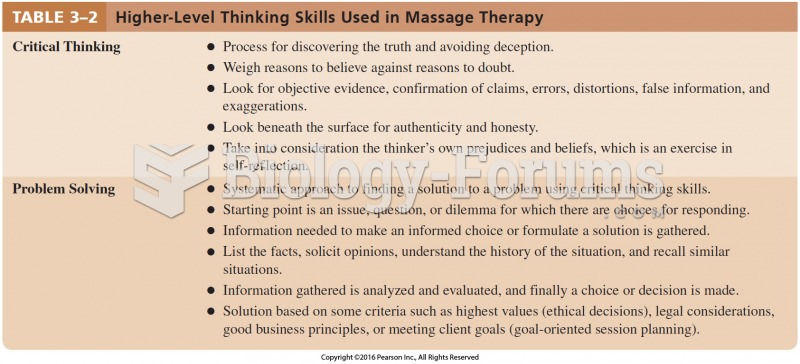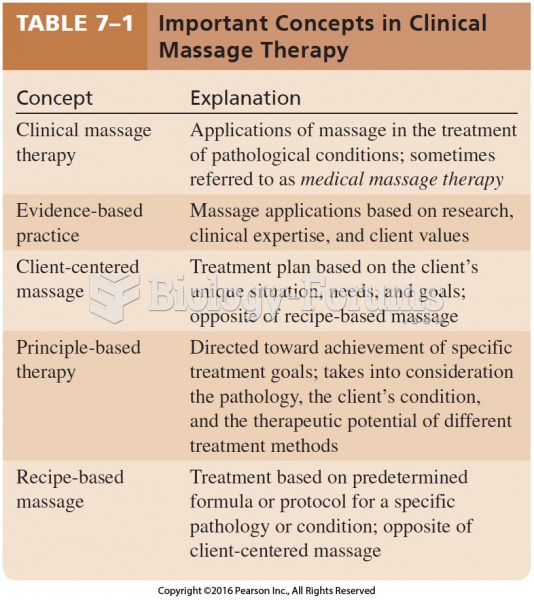Answer to Question 1
1,2
Rationale 1: The patient on long-term corticosteroid therapy is at risk for osteoporosis and should avoid carbonated beverages.
Rationale 2: Regular weight-bearing exercises help to strengthen the bones.
Rationale 3: The patient should have a sufficient calcium intake, either from foods or from supplements.
Rationale 4: There is no specific reason to schedule colon studies.
Rationale 5: There is no reason to avoid caffeine in the diet.
Global Rationale: The patient on long-term corticosteroid therapy is at risk for osteoporosis and should avoid carbonated beverages. Regular weight-bearing exercises help to strengthen the bones. The patient should have a sufficient calcium intake, either from foods or from supplements. There is no specific reason to schedule colon studies or to avoid caffeine in the diet.
Answer to Question 2
4
Rationale 1:Diphenhydramine (Nytol) is incorrect because it is an antihistamine, and causes significant drowsiness.
Rationale 2:Eszopiclone (Lunesta) is incorrect because this medication has a long half-life, and decreases early-morning waking.
Rationale 3:Ramelteon (Rozerem) is incorrect because this is a melatonin receptor agent, and is used to induce sleep.
Rationale 4: Zaleplon (Sonata) allows the client to fall asleep but still wake early. It is often used for travel.
Global Rationale: Zaleplon (Sonata) allows the client to fall asleep but still wake early. It is often used for travel. Diphenhydramine (Nytol) is incorrect because it is an antihistamine, and causes significant drowsiness. Eszopiclone (Lunesta) is incorrect because this medication has a long half-life, and decreases early-morning waking. Ramelteon (Rozerem) is incorrect because this is a melatonin receptor agent, and is used to induce sleep.







